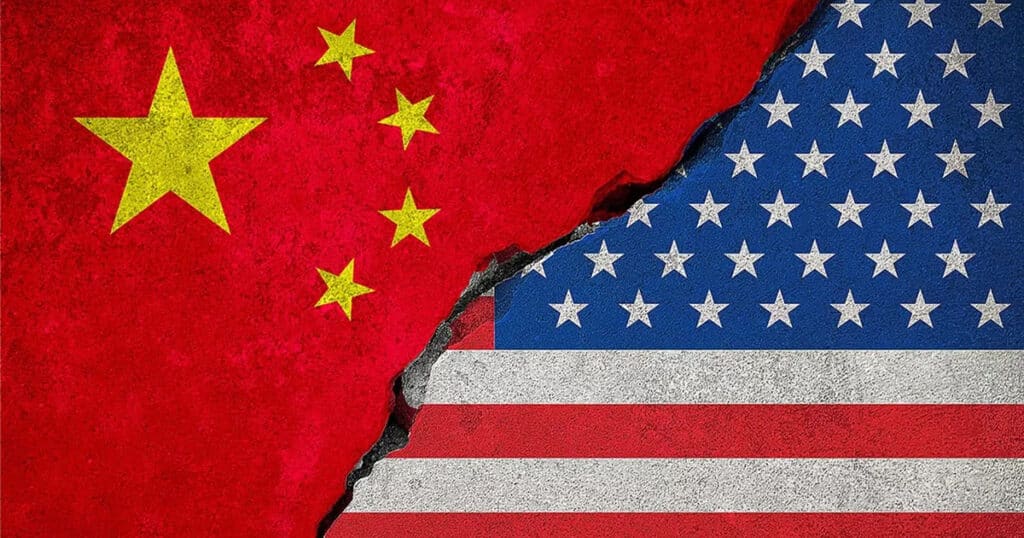
We’re Losing the AI Product Race. Here’s How to Win It.
China’s just released Opinions on Deeply Implementing the “Artificial Intelligence Plus” Action emphasizes embedding AI into daily life, government, products, manufacturing, and society. The comparable U.S. AI Action Plan emphasizes AI innovation and infrastructure, cybersecurity, safety, and national security. China is delivering products. America is delivering software and safety.
The World Robot Conference (Aug. 8–12) and Humanoid Robot Games (Aug. 15-17) in Beijing are a wake-up call that the AI revolution will be felt in products, not just in data centers. While Washington debates chip and AI model export rules, Chinese factories are delivering AI-enabled products. Drones inspect crops, rails, and power lines. AI-enabled kiosks provide medical diagnoses. Robots maintain solar and wind farms. And, the military component cannot be overstated: in July, the PLA showcased Unitree dog robots equipped with guns.
It’s not just about innovation. Switzerland and Silicon Valley are innovating like crazy. But it’s China that has the deep and wide supply chain able to build at scale and price. The scale is sobering. In the first half of 2025, China produced about 370,000 manufacturing robots. By contrast, North American firms ordered 31,311 industrial robots in 2024, different metrics, same message: scale. With already-advanced production, China is embedding AI into its manufacturing base at industrial scale while America neglects manufacturing at its peril. Without competitive manufacturing, we may lose both the AI software race and the AI product race.
America excels at writing code, training models, and running cloud infrastructure. The recently announced $500 billion Stargate AI infrastructure project, the largest technology commitment in U.S. history, demands domestic manufacturing but contains no direct incentives for manufacturing. The real AI prize lies outside the cloud. Putting intelligence to work in farms, factories, hospitals, and battlefields requires a domestic, allied-controlled, resilient supply chain.
Three vulnerabilities in our supply chain stand out. First, semiconductors. Taiwan produces the leading-edge chips required to win AI. Intel’s technology challenges and customer struggles underscore the gap between it and TSMC. America needs to act now to save Intel Foundry, which lacks the balance sheet to succeed. The administration’s 9.9% percent Intel stake is a start. However, Intel requires about $40 billion in new money to have a real chance at success. Were China to seize Taiwan, the United States would lose access to cutting-edge semiconductors essential for AI leadership.
Next, critical minerals. Chinese firms dominate the minerals and products needed for batteries, magnets, motors, and semiconductors. The DoD’s recent $350 million investment in MP Materials and nearly $1B in DOE funding help, but they’re years late. Every AI product, not to mention most Defense Department platforms and munitions, relies on critical minerals and their products imported from China.
Third, communications. China’s Huawei and ZTE dominate the global market for advanced mobile networks, delivering foundational infrastructure for AI. Huawei equipment powers 4.5 million 5G base stations in China alone. China uses its communications infrastructure as a strategic “loss leader” to promote other global infrastructure sales, ranging from factory automation to secure financial transactions and surveillance. The United States has no equivalent end-to-end vendor. Instead, America and its allies, who can afford it, rely on Ericsson and Nokia. Ericsson and Nokia don’t have the state-backed support to counter China’s worldwide competitive scope.
AI will follow the miniaturization trajectory that transformed computers from room-sized machines to pocket devices. What today requires football-field-sized data centers will soon fit in palm-sized devices and household robots. As AI capabilities mature, autonomous vehicles, household robots, and robot-led manufacturing will become as common as smartphones. Making these products competitively determines who wins the global influence race.
Beyond the products themselves, hardware platforms embed standards, dependencies, potential backdoors, and surveillance. The next generation of cars, power grids, and defense systems will operate on either American and allied platforms or on a Chinese AI-enabled stack exported worldwide with Beijing’s standards and surveillance integrated. National security, jobs, and GDP growth rely on rebuilding our manufacturing capabilities.
America lost manufacturing over three decades of tax policies, trade rules, and financial incentives that favored offshoring, worsened by China’s managed exchange rate, abundant energy, and mercantilism. American tax policy has implicitly penalized manufacturing by taxing its lower returns the same as higher-return investments. Outsourcing provided low-priced goods to consumers but was disastrous for national security. It took 30 years to hollow out our manufacturing base. Rebuilding it isn’t quick, free, or easy. Still, the alternative is worse: continued dependence on China.
Only broad-based manufacturing support across all critical sectors can reestablish the domestic supply chain required for national security, GDP growth, and job creation. Washington has taken initial steps with the recently enhanced Advanced Manufacturing Investment Credit and credits for R&D and new manufacturing investments. More is needed.
Congress should establish a manufacturing-finance institution modeled on Fannie Mae to backstop over $600 billion in private lending for supply chain investment, including factories, equipment, working capital, and training. In critical sectors, enhanced tax and other credits should specifically favor manufacturing investment, expense reduction, and workforce training. Congress should also approve fast-track regulatory approvals for plants while maintaining safeguards and expand “friend-shoring” with allies to build resilient supply chains outside China’s orbit. Guardrails, such as limiting buybacks and dividends, must accompany extraordinary government support until repayment, ending the use of these support mechanisms, or milestones are met. We must rebuild the “missing middle” of components, industrial-scale production, tooling, materials, chemicals, and process and systems integration.
Additionally, the federal government operates a sprawl of hundreds of supply chain grants, loans, and study initiatives. Congress should coordinate these efforts under a single authority to review their efficacy and oversee manufacturing policy.
This isn’t about recreating 1960s manufacturing. The advanced manufacturing we rebuild will leverage automation, AI, and new production technologies. We must act to ensure the AI products America and its allies consume in the future aren’t built on Chinese foundations.
Critics will call this industrial policy. However, our current tax, rules, and regulations are industrial policy by another name. It has not served us well.
America faces a fundamental decision. We can continue to focus on AI services and software, striving to maintain leadership through investment and export restrictions. Or we can broaden our vision, marrying American innovation with a deliberate strategy to rebuild manufacturing strength. The advanced manufacturing we build will be very different from what we lost.
As Ronald Reagan famously said: “If you want more of something, subsidize it; if you want less, tax it.” If we want an American AI future, Congress should act.
Mark Rosenblatt is a technology investor. He is the CEO of Rationalwave, a technology focused investment fund.
This article was originally published by RealClearPolicy and made available via RealClearWire.



